
A tram is a rail vehicle that travels on tramway tracks on public urban streets; some include segments on segregated right-of-way. The tramlines or networks operated as public transport are called tramways or simply trams/streetcars. Many recently built tramways use the contemporary term light rail. The vehicles are called streetcars or trolleys in North America and trams or tramcars elsewhere. The first two terms are often used interchangeably in the United States, with trolley being the preferred term in the eastern US and streetcar in the western US. Streetcar or tramway are preferred in Canada. In parts of the United States, internally powered buses made to resemble a streetcar are often referred to as "trolleys". To avoid further confusion with trolley buses, the American Public Transportation Association (APTA) refers to them as "trolley-replica buses". In the United States, the term tram has sometimes been used for rubber-tired trackless trains, which are unrelated to other kinds of trams.

Trams are a major form of public transport in Melbourne, the capital city of the state of Victoria, Australia. As of May 2017, the Melbourne tramway network consists of 250 kilometres of double track, 493 trams, 24 routes, and 1,763 tram stops. The system is the largest operational urban tram network in the world. Trams are the second most used form of public transport in overall boardings in Melbourne after the commuter railway network, with a total of 206 million passenger trips in 2017–18.

Hong Kong Tramways (HKT) is a 3 ft 6 in narrow-gauge tram system in Hong Kong. Owned and operated by RATP Dev Transdev Asia, the tramway runs on Hong Kong Island between Kennedy Town and Shau Kei Wan, with a branch circulating through Happy Valley.
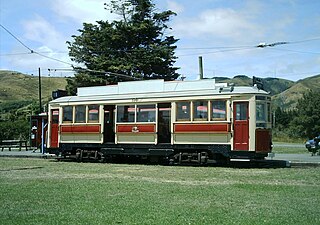
The Wellington tramway system (1878–1964) operated in Wellington, the capital of New Zealand. The tramways were originally owned by a private company, but were purchased by the city and formed a major part of the city's transport system.

The Kingston upon Hull tramway network was a network of 4 ft 8+1⁄2 instandard gauge tram lines following the five main roads radially out of the city centre of Kingston upon Hull, East Riding of Yorkshire, England. Two of these lines went west, and two east. The fifth went to the north, and branched to include extra lines serving suburban areas. Additionally a short line linked the city centre to the Corporation Pier where a ferry crossed the Humber Estuary to New Holland, Lincolnshire.
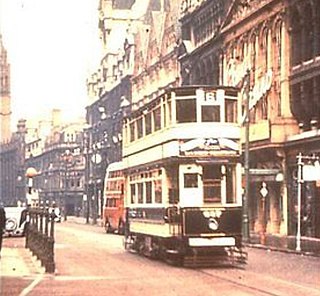
Birmingham Corporation Tramways operated a network of tramways in Birmingham from 1904 until 1953. It was the largest narrow-gauge tramway network in the UK, and was built to a gauge of 3 ft 6 in. It was the fourth largest tramway network in the UK behind London, Glasgow and Manchester.

Leicester Corporation Tramways was a tramway system in Leicester, England from 1901 to 1949.

Trams in Ballarat were first used for public transport in 1887. They ceased to operate as a means of public transport in 1971, but a section continues to be operated today as a tourist attraction.

The Basel tramway network is a network of tramways forming part of the public transport system in Basel, Switzerland, and its agglomeration - it also reaches into adjacent suburbs in Germany and France. The only two other tramway networks to cross an international border are Geneva's and Strasbourg's tramways. The Basel tram system consists of 13 lines. Due to its longevity, it is part of Basel's heritage and, alongside the Basel Minster, is one of the symbols of the city.
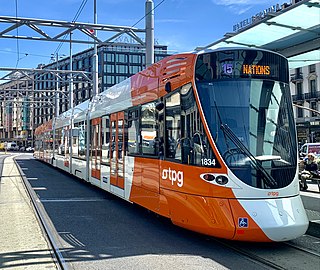
The Geneva tramway network is a network of tramways forming the core element of the public transport system in Geneva, Switzerland. It is operated by Transports Publics Genevois (TPG), and is supplemented by the Geneva trolleybus system and the Geneva bus system.

The Cape Town trolleybus system was part of the public transport network in Cape Town, South Africa, for nearly 30 years in the mid-twentieth century. The trolleybuses on the system were always referred to by English-speaking locals as "Trackless trams", and even the systems's stops were marked "Trackless Tram Stop".

Cape Town, South Africa, has had two tramway networks forming part of its public transport arrangements. Both networks are now long closed.

The Durban tramway network formed part of the public transport system in Durban, South Africa, for nearly 70 years until the end of the 1940s.
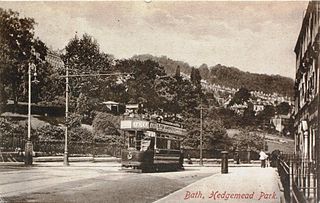
Bath Tramways Company and its successors operated a 4 ft horse drawn tramway service in Bath between 1880 and 1902. From 1903 until its closure in 1939 an expanded route carried electric trams operated by Bath Electric Tramways Company.

The Johannesburg tramway network formed part of the public transport system in Johannesburg, South Africa, for just over 70 years until the start of the 1960s.

The city of Geelong in Victoria, Australia, operated an extensive tramway system from 1912 until 1956, when the service was replaced by buses. Unlike Victoria's other major regional cities, Ballarat and Bendigo, which have kept some track and trams as tourist attractions, no trams or tracks remain in Geelong.
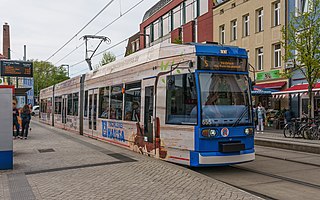
The Rostock tramway network is a network of tramways forming the centrepiece of the public transport system in Rostock, the largest city in the federal state of Mecklenburg-Vorpommern, Germany.
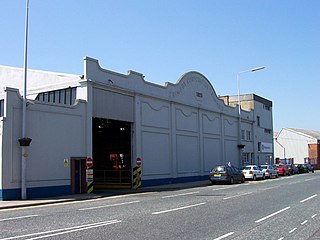
The Great Grimsby Street Tramways Company was a tramway serving Grimsby and Cleethorpes in Lincolnshire, England. It was a subsidiary of The Provincial Tramways Company. They opened a horse tramway in 1881, running from the Wheatsheaf Inn in Bargate to the border with Cleethorpes, with a branch along Freeman Street, and extended the line into Cleethorpes in 1887. It followed the trend of many British systems, and was converted to an electric tramway in December 1901. Small extensions were made to the system at both ends, but the basic plan of the system remained the same throughout its life.

The Tramway Museum, St Kilda is Australia's principal museum of the 19th and 20th century trams of Adelaide, South Australia. It is situated at St Kilda, 24 kilometres north of the centre of Adelaide. It is operated by the Australian Electric Transport Museum (SA) Inc., a not-for-profit volunteer organisation affiliated with the Council of Tramway Museums of Australasia. It is dedicated to the study, conservation and restoration of trams that were used in Adelaide or built there, and likewise with a small bus and trolleybus collection. Trams provide rides for visitors along a 1.6 km (1.0 mi) purpose-built track between the museum and a large adventure playground.



















